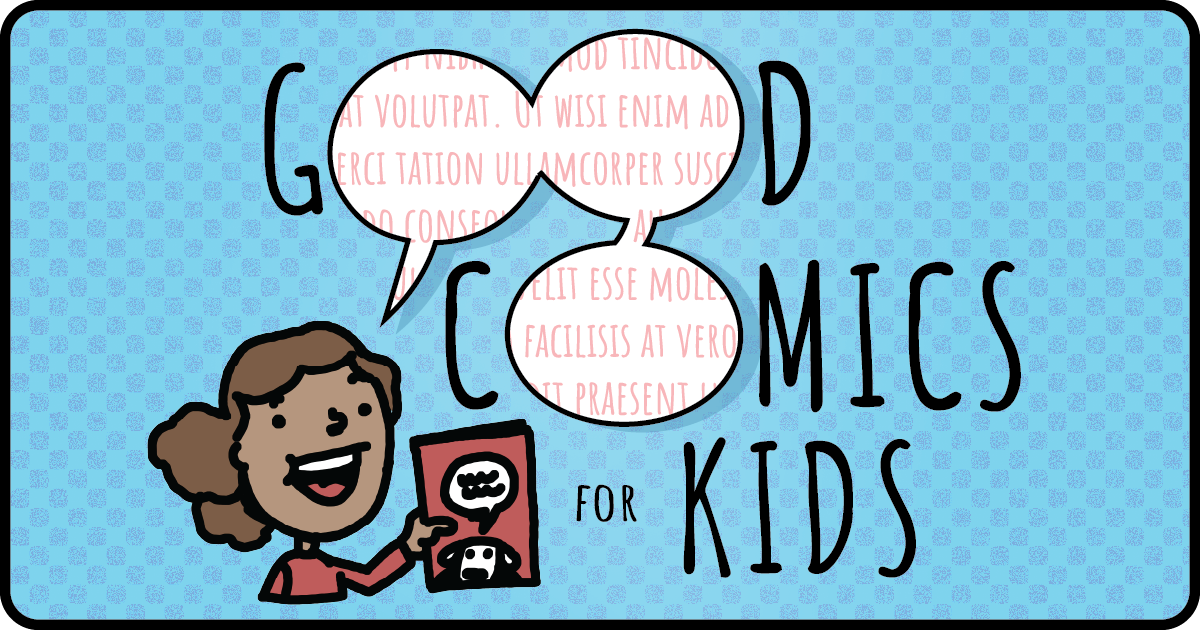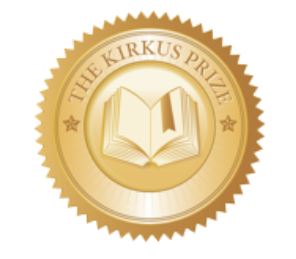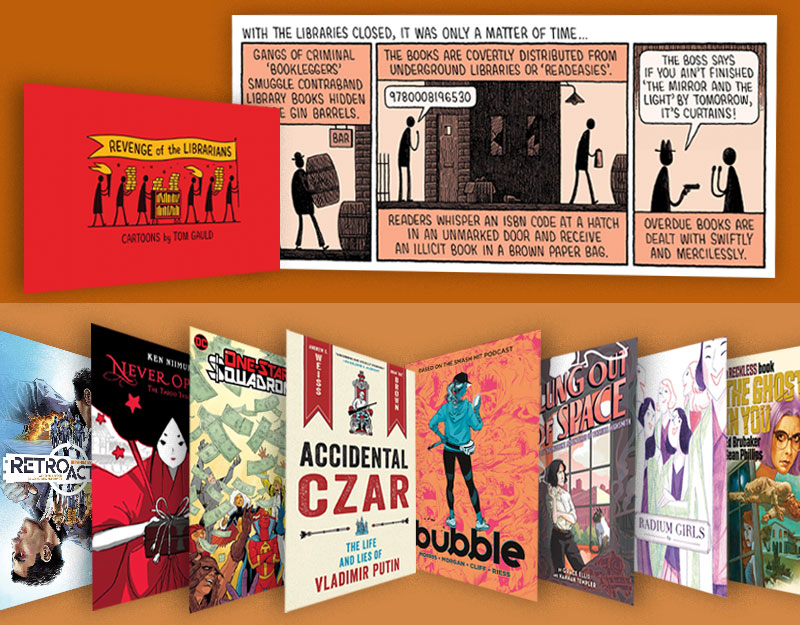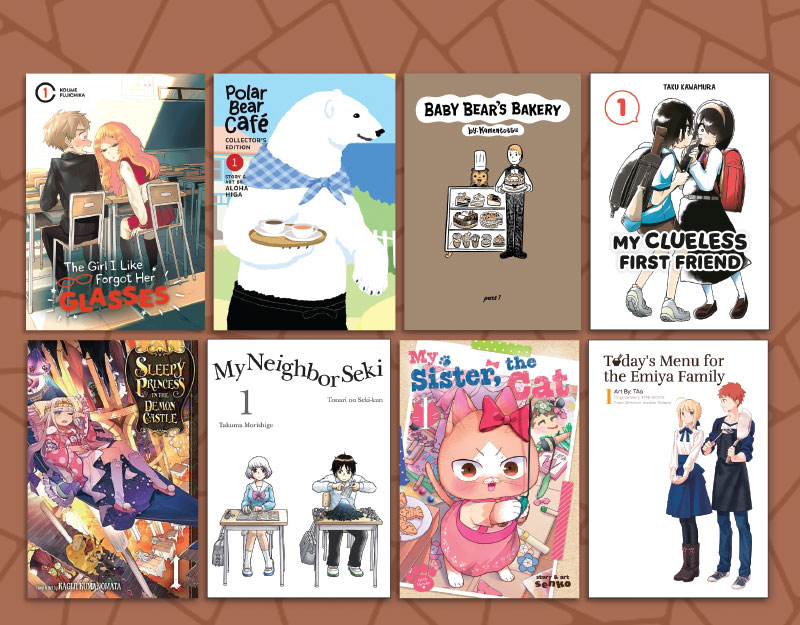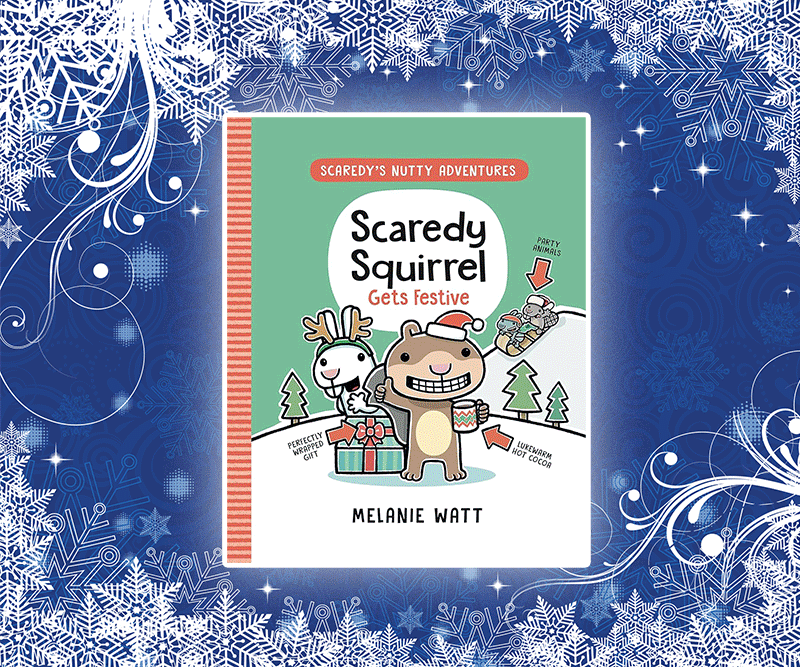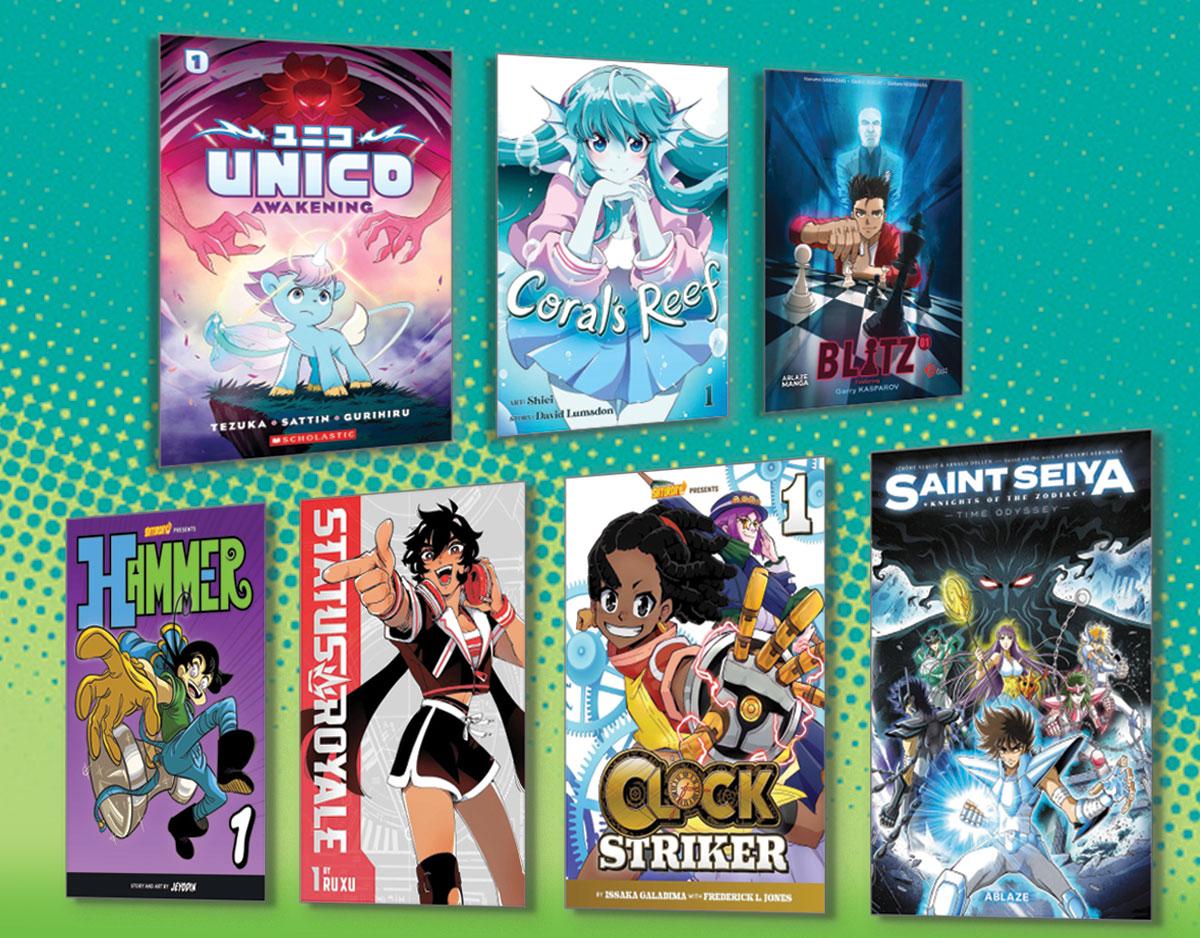
Interview: James Tynion IV on ‘Backstagers’
James Tynion IV and Rian Sigh have wrapped up their eight-issue series Backstagers, and the first of two volumes of the collected edition will be out on July 19. I interviewed Tynion for my article on middle-grade comics with LGBTQ characters that ran in SLJ in May, and since I only had room for a few short quotes, I thought it would be nice to run the interview at length here.
Backstagers is a story about the stage crew at an all-male high school and the adventures they have when they go into the treacherous realm behind the stage door. It’s a supernatural comedy with a great ensemble cast.
ADVERTISEMENT
ADVERTISEMENT
Tynion is also the writer of The Woods (BOOM! Studios), Detective Comics (DC), and Batgirl (DC), and last week BOOM! Studios announced his new comic, Eugenic (NB: It doesn’t look like a kids’ comic.)
 What was your inspiration for Backstagers? Were you on stage crew?
What was your inspiration for Backstagers? Were you on stage crew?
Yes, I was!
I wanted to write the book that I needed the most, particularly in middle school and when I first started reading comics. There were superhero stories I loved reading, but there weren’t a lot of characters like me. I was an awkward young kid who was starting to understand that I wasn’t straight. I didn’t see myself out there, and the few bits of gay representation that I saw were in a stereotypical mold. In building the story, I wanted to go beyond just creating a cast of misfits. I always wanted the book to be about misfits, misfits are great, but I wanted to have different forms of queer masculinity. There are no traditionally macho characters in the book. I really wanted to show how diverse male queerness can be, and when you have a book that embodies lots of different forms of characters it opens it up for you to play those characters off against each other. Rian and I have taken a lot of influence from shoujo manga, Steven Universe, those sorts of things.
And then I was a member of stage crew going through middle school and high school, and it was really joining stage crew was where I found myself and my voice. I was in the theater program and I felt like I was a weirdo among the weirdos, and then I found a home among the stage crew. They didn’t care that I liked guys. They were interested in things I was interested in. They didn’t want to be anything or fit any role; they just wanted to hang around and build sets. That kind of community and the magic of that, those all came together and became the Backstagers.
Are there any romantic relationships?
You ‘ll be hitting that in the next couple of issues [Ed: I think I was on issue #5 or 6 when we talked]. It’s pretty up front and center. In addition to that, one of the core cast members of the series is Beckett, who is a trans man character.
This isn’t a full-on romance comic, but definitely gay romance is right at the heart of it, and the relationship between [the characters] Jory and Hunter develops and becomes explicit in the next few issues, and there is the relationship between the two stage managers, Jamie and Tim. It’s definitely in there. I think the McQueen twins definitely fill a kind of arch theater gay kind of persona that I knew all too well being part of the theater community. It’s being considered and being put everywhere in the book, but we also didn’t want that to be the point of the series. Kids who don’t really find themselves as characters in comics, we wanted them to find themselves in this book. This was really important to Rian and me. Both of us are queer.
 How does your writing change when you are writing for young readers?
How does your writing change when you are writing for young readers?
I think it’s more trying to capture something tonally. When things get scary, we don’t want them to get too scary. There are big consequences to that. I have also written a lot of horror. I’m not going to go full crazy on that. The guiding point for me is a lot of cartoons, especially those coming out recently. Tonally, I think what we are trying to match is Steven Universe, which has a deep mythology but also has a lot of humor and silly aspects. Being an all ages title allows you to revel in the fun bits that you might gloss over in a book for an older audience. It’s trying to create something that everyone will enjoy but particularly speaks to a crowd that isn’t looking for anything too intense or explicit. There are levels to all this.
Is LGBTQ representation an important part of the comic?
Yes, honestly, I think that’s something that is very much baked into Backstagers, making a very representational comic, especially [because] there just is not a lot of queerness in all ages material, media, across the board. Which can be really tough. Growing up, not being able to see yourself in the media you consume, you feel like there’s something wrong. You can’t connect on the same level because you might not exist in the world of this story. Seeing yourself in these worlds is so empowering.
ADVERTISEMENT
ADVERTISEMENT
One thing I hope to see more of in comics and across the board is transgender representation, which I think is starting to happen but has only started brushing against the mainstream. That is something that I try to make a priority in my work. I also have a trans character in The Woods, and I just introduced a trans character in Detective Comics, which I write for DC. The trans people need to have their own representation out there and anything that helps that process along I think will be for their benefit in the long run.
Was there anything that did resonate with you when you were reading comics as a child?
Subtexts. One of the best examples would be the X-Men comics—they were feared and hated by the outside world. There were parallels I could latch into as an outsider but it was all coded. I definitely felt growing up there wasn’t material that spoke to me. Frankly that’s what I’m trying to create here, and that’s the goal that Rian and I had in developing the book.
What is your goal for Backstagers?
I think that Backstagers is going to have a strong second life. It’s a small title right now, especially up against the superhero behemoths of the industry, but it has a slow and steadily building audience that is drawing fan art. There are a lot of folks that have not ever seen themselves in a comic before and haven’t latched onto it, and once it is available in a Barnes and Noble that will change that. That will help people find the book and latch on to it. That’s my hope anyway.
Ultimately it will be two volumes, and those two volumes tell a story that doesn’t exist elsewhere in the industry. I hope the people we really wrote it for, the people who are very much like 12-15-year-old James and 12-15-year-old Rian, I want them to find this book. I think it will be important to them. I have found a few young readers who have found the book and it’s special to them. There’s no better feeling in the world than feeling that you have made some impact and made something that has resonated with the young reader.
Filed under: All Ages
About Brigid Alverson
Brigid Alverson, the editor of the Good Comics for Kids blog, has been reading comics since she was 4. She has an MFA in printmaking and has worked as a book editor, a newspaper reporter, and assistant to the mayor of a small city. In addition to editing GC4K, she is a regular columnist for SLJ, a contributing editor at ICv2, an editor at Smash Pages, and a writer for Publishers Weekly. Brigid is married to a physicist and has two daughters. She was a judge for the 2012 Eisner Awards.
ADVERTISEMENT
ADVERTISEMENT
SLJ Blog Network
Zachariah OHora on PBS
Cover Reveal and Q&A: Dusti Bowling’s Latest – The Beat I Drum (Apr 2025)
The Seven Bills That Will Safeguard the Future of School Librarianship
Read Rec Rachel: New YA Releases for November and December 2024
Gayle Forman Visits The Yarn!
ADVERTISEMENT

